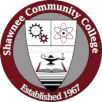 Policy
Policy
Policy Type: Board- Strategic Outcomes
Responsible: President
Related Policies: B1000, B1002, B1004, B1005
Linked Operating Standards: Axxx Continuing Education & Workforce Training Monitoring Report Development
Related Laws: WIOA, 110 ILCS 805/2-4, WEI, ICCB Administrative Rules
Related External Standards: NCWE, US-SBA
HLC Criterion: 1A1A The institution’s educational programs, enrollment profile and scope of operations align with its publicly articulated mission., 1B1B The institution’s operation of the academic enterprise demonstrates its commitment to serving the public good.; 2B2B
The institution presents itself accurately and completely to students and the public with respect to its educational programs and any claims it makes related to the educational experience.
; 3C3C
The institution has the faculty and staff needed for effective, high-quality programs and student services.
, 3D3D
The institution provides student support services that address the needs of its student populations, as well as the teaching resources and infrastructure necessary for student success.
, 3E3E The institution provides student support services that address the needs of its student populations, as well as the teaching resources and infrastructure necessary for student success., 3G3G The institution’s student success outcomes demonstrate continuous improvement, taking into account the student populations it serves and benchmarks that reference peer institutions.; 4A4A
The institution’s administrative structures are effective and facilitate collaborative processes such as shared governance; data-informed decision making; and engagement with internal and external constituencies as appropriate.
, 4B4B
The institution’s financial and personnel resources effectively support its current operations. The institution’s financial management balances short-term needs with long-term commitments and ensures its ongoing sustainability.
, 4C4C
The institution engages in systematic strategic planning for quality improvement. It relies on data, integrating its insights from enrollment forecasts, financial capacity, student learning assessment, institutional operations and the external environment.
Monitoring Reports
Policy Statement
Workforce Training advances the College’s mission by providing training, consulting, and technical expertise that strengthen business performance, employee development, and regional economic competitiveness. These services address the evolving needs of employers, industry sectors, and community partners through customized solutions that enhance productivity, innovation, and organizational capacity.
Workforce Training activities may include customized training programs, contract-based services, organizational consulting, and the provision of specialized technical expertise – including support for small and medium enterprises (SMEs) – to foster workforce vitality and economic growth across the College’s service region.
The Board recognizes that:
- Employers gain value when the College provides accessible, high-quality workforce training aligned to current technologies, standards, and best practices.
- Employees (workers/trainees) gain value through upskilling and reskilling that lead to career advancement, credential attainment, and improved job stability.
- Organizations and public agencies benefit from consulting and technical assistance that strengthen leadership, process efficiency, and workplace innovation.
- Small and medium enterprises (SMEs) gain critical value from specialized technical expertise that supports entrepreneurship, technology adoption, process improvement, and business continuity.
- Communities benefit when employers and workers have access to responsive workforce services that drive job retention, economic resilience, and regional competitiveness.
To honor these values, the Board expects Continuing Education programming to:
- Provide Responsive Training Solutions – Deliver customized and contract-based programs, courses, and workshops addressing current and emerging employer needs.
- Offer Consulting and Organizational Support – Provide business advising and applied consulting that enhance leadership effectiveness, process improvement, and operational performance.
- Deliver Specialized Technical Expertise – Share subject-matter and technical expertise that assists employers and partners in adopting new technologies, improving systems, and strengthening competitiveness.
- Foster Strategic Partnerships – Collaborate with employers, economic development entities, and workforce agencies to build regional capacity and leverage shared resources.
- Support Incumbent Worker Development – Design programs that help existing employees maintain skills, earn credentials, and adapt to technological or organizational change.
- Strengthen Credential and Credit Integration – Develop stackable credentials and modular learning experiences that align workforce training outcomes with recognized certifications, licensure requirements, or articulated credit pathways within the College’s academic programs.
- Ensure Quality and Fiscal Accountability – Operate with clear cost-recovery principles, maintain instructional quality, and evaluate outcomes for relevance and effectiveness.
- Promote Equity and Regional Access – Expand participation among diverse employers and across all service counties, ensuring equitable access to workforce services and expertise.
- Demonstrate Results Through Evidence – Provide measurable outcomes through SCCES Key Performance Measures and Indicators, including:
- Employer participation and satisfaction rates.
- Number and diversity of businesses served.
- Training completion and credential attainment outcomes.
- Contract and service revenue trends.
- Indicators of business performance or workforce advancement resulting from College engagement.
The Board will assess institutional performance relative to this policy through annual Monitoring Reports that provide clear and sufficient evidence of results.
| Change Log | Governance Unit: Board of Trustees |
| Date | Description of Change |
| 03-07-22 | Initial Adoption |
| 12-05-22 | Added Deployment Measures |
| 12-14-23 | Board Reviewed, No Changes |
| 12-19-24 | Board Reviewed, No Changes |
| 08-21-25 | Board Reviewed, Minor Grammatical/Punctuation Changes; HLC Criterion Updated |
| 11-20-25 | Major revision. Aligned w/ Monitoring Report expectations and Admin OS |
| 12-18-25 | Board Reviewed, No Changes, Board Approved |
